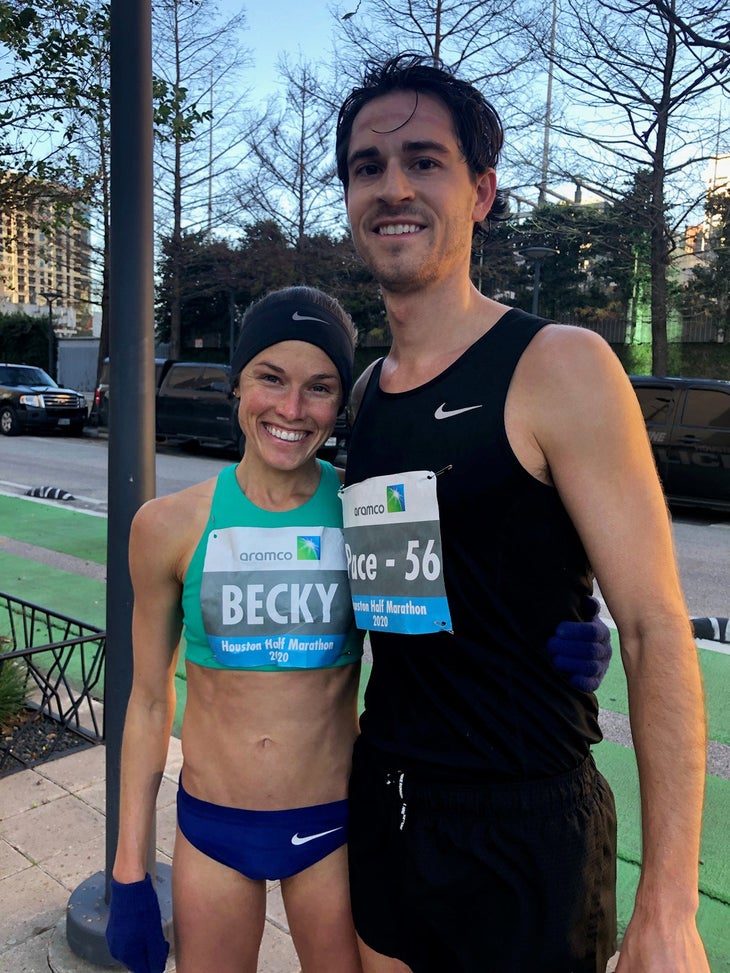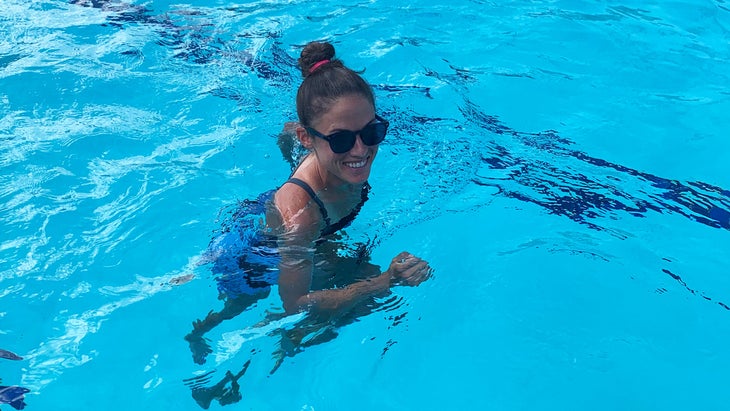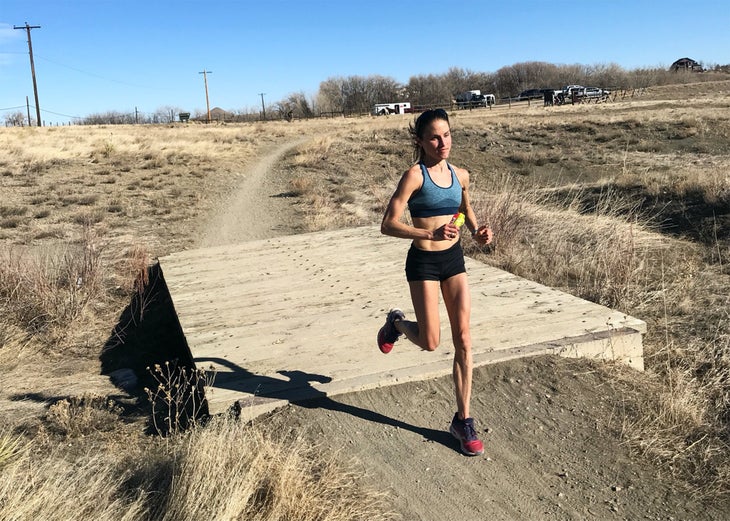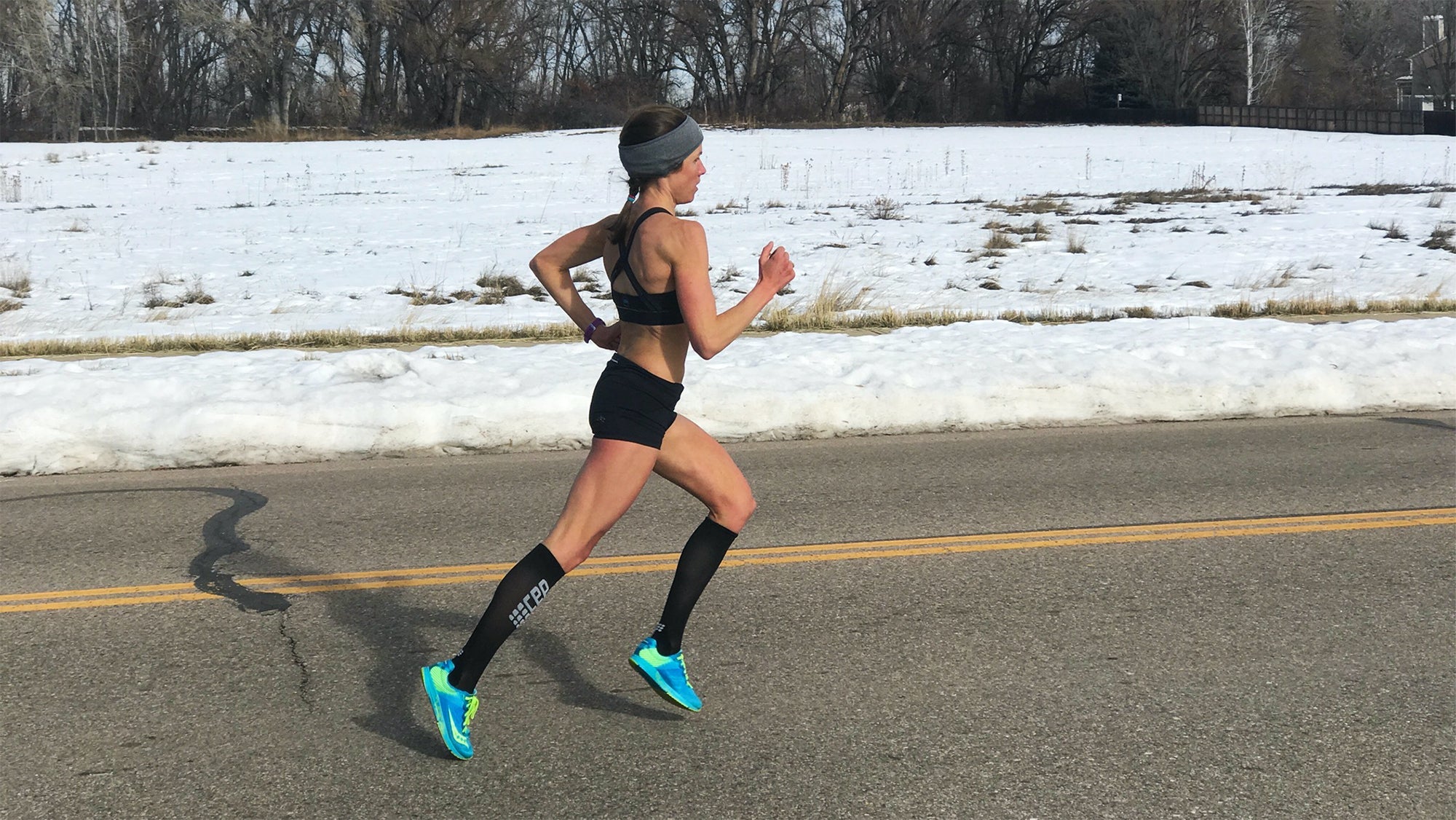Becky Wade ran a 2:30:41 in her marathon debut, winning Cal International in 2013. She’s had some ups and downs since, but lately has been a consistent contender on the U.S. roads. She was the first American at the Toronto Marathon last October with a 2:33:03, and she placed 6th American in a pack of runners at the January 19 Houston Half Marathon in a PR 1:09:40. As she prepares for the Olympic Trials Marathon in Atlanta on February 29, Wade shared a week of her training, from January 26 to February 1, 2020.
While the Olympic Marathon Trials are a high stakes, once-every-four-years big deal, I chose at the start of my buildup last November to try my best to approach it like any other marathon. My goals are always to get as fit as possible, to stay healthy, and to run 26.2 miles as fast and competitively as I can. For me, adding an extra layer of pressure feels more stifling than constructive.
That said, of course I hope to have the race of my life on February 29th—and my last few months of training, plus a 95-second PR in the Houston Half six weeks out—have me feeling confident that I can. While my weekly mileage didn’t change much from my last few buildups, mostly hovering in the 100–110 range, my daily structure has been a little different.
I typically ran medium long (12–14 miles) with a double on Tuesday, did long intervals on Thursday, and put in big miles on the weekend, with a workout on Saturday, Sunday, or occasionally both. The rest of my runs were comfortable, and I supplemented with three to four 30-minute water jogging sessions per week. Finally, each week included one heavy lift, one bodyweight strength session, and five to six short core routines.
Here’s what one week of training in Boulder, Colorado (roughly 5,400 feet of elevation) looked like, starting one week after the Houston Half Marathon and ending one month out from the Olympic Marathon Trials:

Sunday, January 26
AM: Long run—22 miles
I flew back from Houston last night after a fun and productive 10 days of racing, training under my coach Jim Bevan’s watchful eye, spending time with the Rice University runners, and catching up with friends and teammates. I did a moderate but high volume workout on the track yesterday, so today’s long run was a comfortable, hilly 22 miles. Along with my husband Will, I ran two big loops on dirt roads in the Longmont area, gaining and losing around 800 feet and comfortably averaging in the 6:40s. My legs officially feel recovered from the race a week ago.
PM: Cross-train—30-minute waterjog
Three or four times a week, I hop in the pool after a run (either immediately or several hours later) to spin my legs and work through the stiffness. Tonight, I did 30 minutes of water jogging and felt noticeably looser after I finished.

Monday, January 27
AM: Recovery run—6 miles
After a big weekend, I’m always ready for a true recovery day on Monday. Today I ran 6 miles very easy at Davidson Mesa, a gently undulating dirt loop and one of my favorite places to run in the Boulder area. I rarely time my recovery runs so I stay true to the day’s purpose and avoid the temptation to push it.
PM: Cross-train—30-minute waterjog
Right after my run, I met Neely Gracey, a fellow Trials qualifier and my go-to pool buddy, at our local rec center for a half-hour waterjog. Meeting up with a friend makes cross-training much more fun (and me less vulnerable to procrastination).
Tuesday, January 28
AM: Negative-split medium long run—14 miles
On my schedule this morning was 14 miles, with the first 8 comfortable, the next 3 moderate, and the last 3 progressive. I do a run like this most weeks, not so much as a grueling workout but to practice changing gears and running quick on tired legs (both from the long warmup and residual fatigue from the weekend). Instead of prescribing specific paces, my coach gives me a ballpark window along with instructions like “pick it up but don’t hammer.” Today I ran at Bobolink, one of the flattest and most popular dirt trails in Boulder, and stayed in the 6:00–5:30 range for the 6 pick-up miles.
PM: Recovery run—6 miles
An easy 6 miles tonight put the day’s total at 20, and served as a nice shakeout from the morning. I ran from Coalton, a trailhead near my house, that has a nice mix of hilly and flat stretches; perfect for changing up muscle groups and letting effort be my guide.

Wednesday, January 29
AM: Recovery run—10 miles
Knowing that today will be sandwiched by two 20-mile days, I was serious about keeping this morning’s 10-mile run easy. No Garmin and no goals besides enjoying myself and getting my legs ready for a good workout tomorrow.
PM: Cross-train—30-minute waterjog
Thursday, January 30
AM: Hard workout—16 miles
My two key workouts this week are today and Sunday, first up being shorter intervals on the road (to be followed in a few days by a tempo within a long run). Will joined me for most of the workout before he had to dart off to work, and was immensely helpful as always—especially since it was 20 degrees and super foggy at the start!
After 2 easy miles, drills, and a few strides, we ran 4 sets of 2 miles with a 1-mile recovery jog between each set, averaging just under 5:30 for the harder miles and around 6:45 for the recovery miles. I felt smooth and was pleasantly surprised and encouraged by many of our splits. A 3-mile cool down put me at 16 miles for the morning.
PM: Recovery run—5 miles
I met my friend (another Trials qualifier) Dan Nestor for my shakeout tonight, jumping in for 5 miles of his longer run. We tried out a new extension of an old trail (Coal Creek) and had more than enough catching up to fill the time with.
Friday, January 31
AM: Recovery run—10 miles
Similar to Wednesday, I had 10 miles easy this morning and roped my friend Molly Grabill (another Trials qualifier—Boulder is full of us!) into joining Will and I. We ran loops at Davidson Mesa and Harper Lake, and ensured an easy pace with nonstop chatting.
PM: Cross-train—30-minute waterjog

Saturday, February 1
AM: Medium long run with strides—14 miles
Today is another medium long run that also serves as a tune up for a long workout tomorrow. Will and I met up with Molly again, plus 1500m and 5k specialist Ashley Stinson, and shared bits and pieces of our individual runs. While Molly and I ran about an hour easy, Will paced Ashley to some speedy reps on the track, and then I joined them for 10 1-minute strides. I was originally supposed to do 10 times 400, but when he heard the crazy wind (with gusts above 40mph) over the phone, my coach swapped that out for time-based efforts. 3 leisurely cool down miles left my body in a good state for tomorrow.
PM: Rest
Week Summary:
• 103 miles
• 2 workouts: 4 x 2 miles and 14 mile progression
• Long run: 22 miles
• 2 hours cross training: waterjog
—
Becky Wade, 2:30 marathoner, is the author of the memoir, Run the World: My 3,500-Mile Journey Through Running Cultures Around the Globe.


